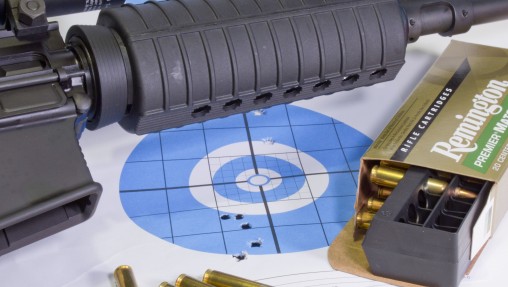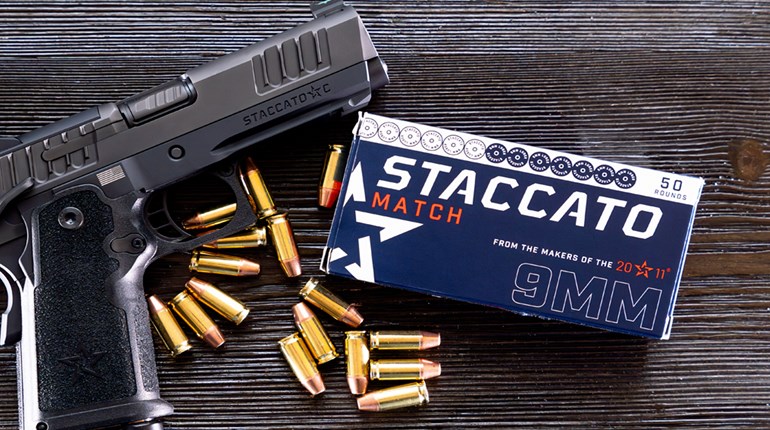
I like to think my kids are better than the average rug rat, and I like to think my wife is better than the average married lady, if not all women. I also like to believe the ammunition I use—factory loads or handloads—beats the average. But what is average?
Average, as most humans look at it or use the word in everyday talk, is not so much based on numbers as it is a perception. It’s used to describe something about midway between two extremes. For example, you and your buddy are on the beach and a woman walks by. She’s not ugly but she’s not Kate Upton, either. You call her average, but your buddy disagrees and says she’s better than average. This is partly because he doesn’t get out much and partly because, well, he’s kind of ugly.
Average references like the one above are not very helpful because they’re subjective and based on perception. This is of course why I firmly believe my wife and kids (and sometimes me) are above average.
The average that does mean something is a mathematical average, which represents the result obtained by adding several quantities together and then dividing this total by the number of quantities. This average gives us a threshold we can use to compare things. When evaluating ammunition, this can be a good thing, particularly if you want ammunition that is better than average.
Regarding the terminal performance of defensive-handgun ammunition, I believe averages are important. In my book, “Handgun Training for Personal Protection,” I relate my concept of better-than-average terminal performance based on the testing of hundreds of different loads. While conducting the tests that provided this data, I had no intention of establishing averages as they relate to penetration or expansion. But, as the data mounted, averages seemed to make sense. After all, if a certain defensive-handgun load is not capable of delivering average penetration or expansion, you might want to choose another one.
I found the average penetration was 13.72 inches, and the average diameter of recovered bullets was .58 inch. I also discovered the ability to reach or exceed this average had nothing to do with the caliber or cartridge. Almost every defensive-handgun cartridge of .32 caliber or larger is capable of average or better-than-average terminal performance, depending on the load.
The takeaway is if the bullet from your defensive handgun will penetrate to around 13 inches and expand to roughly .60 inch, then you can feel confident your load will deliver average or better terminal performance. Sure, beyond average there are differences, but given the chaotic nature of a defensive-handgun wound, compounded by the other unknowns with regard to a shooting, average or better is about as fine a line as we can draw when it comes to classifying terminal performance.
Averages can also be useful when looking at accuracy. For the past 10 years, I’ve been testing and cataloging the accuracy of every AR-15 I’ve evaluated. As a result of all this, I’ve managed to create a rather large and inclusive database that allows me to make some average assumptions.

With ARs chambered for .223 Rem./5.56 NATO, I’ve found the average five-shot, 100-yard group will measure about 1.588 inches. This average is a reflection of more than 40 range sessions with about half that many different loads fired from 27 different rifles. The smallest recorded five-shot group average was .60 inch, and the largest was 4.20 inches. The most consistently accurate .223 Rem. load, based on my testing, was Remington’s Premier offering with the 69-grain Sierra MatchKing BTHP bullet.
Granted, this average has to be qualified by my marksmanship skills, but I think it’s fair to assume if a particular load will average less than 1.5 inches for five shots at 100 yards out of your AR-15 chambered in .223 Rem., you could reasonably assume that load is capable of delivering accuracy that is better than average.
As for what might be considered average accuracy for defensive-handgun ammunition when fired from a duty handgun—a revolver or semi-automatic pistol with a 4- or 5-inch barrel—I’ve found five-shot groups averaging roughly 2 inches (2.09 to be exact) at 25 yards from a benchrest is the average. This data is based on 38 range sessions with 31 different handguns and more than 40 different loads.
Again, my shooting ability is part of this assumptive average, which included a rather small .89-inch average for three, five-shot groups. (Yeah, I’m bragging about those groups.) The largest average for three, five-shot groups was 4.02 inches, which in reality is plenty accurate for any duty handgun. All of this makes me wonder why we even bother testing accuracy with defensive handgun ammunition, because none of the groups fired were less than acceptable for the intended purpose.
Averages, whether they are perceived or supported by mathematical calculations, matter to humans. With regard to the average accuracy of .223 Rem. ammunition in the AR-15, the average accuracy of carry loads in duty-size handguns or the average terminal performance of defensive-handgun ammunition, now you know. As far as how your offspring or significant other stacks up? Well, you’re on your own, but I’d be happy to offer an opinion.



































